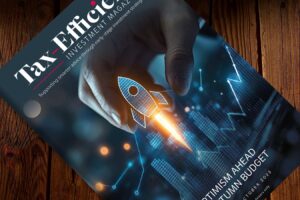Laura Suter, head of personal finance at AJ Bell, comments on the latest Bank of England Money and Credit data.
She said: “Savings rates hit another record high in October, representing the peak before the subsequent fall in rates. The average rate on new fixed rate bonds hit 5.27% – the highest since the Bank’s records began almost eight years ago. The average easy-access rate also ticked up to 1.99% – another record high. However, the decision by the Bank of England at the start of November to hold Base Rate for another month has sparked a downturn in rates. Moneyfacts data shows that the rates on fixed accounts are starting to drop.
“Savvy savers who saw the writing on the wall rushed to fixed rate accounts in October to lock in those deals before they disappeared. The month saw £4.6 billion of savers’ money put into banks and building societies – marking a one-year high, with the bulk of this money going to fixed rate accounts.
“One trend that does appear to have halted is huge outflows from easy-access accounts. Lots of savers had been pulling money from these accounts to funnel into fixed-rate accounts, with easy-access accounts seeing 12 consecutive months of withdrawals. However, that ended in October, with zero net flows in the accounts.
“One thing these figures highlight is that people still have money to save. We’re a far cry from the deposit levels seen in the pandemic, where at its monthly peak the nation was collectively saving £26 billion. But the fact that £4.6 billion of money was put into savings accounts at the sharp end of a cost of living crisis, with stealth taxes eating into people’s take home pay, and inflation pushing up prices, shows the resilience of some households.
“On the flipside, debt levels are rising. The annual growth rate for consumer credit hit the highest rate in five years, while another £1.3 billion was added to the nation’s debt pile in October. This comes at the same time as credit card interest rates rose again, to hit 21.05%. We’re seeing a split nation, with those struggling having to resort to debt while other households have far more resilience and can keep saving.”














